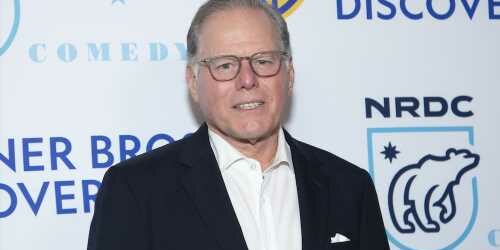David Zaslav and his team could be forgiven for sounding a little stressed on Warner Bros. Discovery’s Q1 earnings call. The company’s numbers were pretty grim for a CEO who prizes his free cash flow.
The Warner Bros. Discovery chief was fired up about a number of issues affecting the studio behind the shield, and he fired off verbal volleys, pop culture quotes and metaphors, invoking everything from military terminology to Formula 1 racing to “The Blues Brothers.” But the liveliest moment of the hourlong conference call with Wall Street analysts was Zaslav’s discussion of subscriber churn rates and how they differ between HBO Max and Discovery+, the two streamers that are set to be married and relaunch as a joint product dubbed Max on May 23.
“The real challenge is the churn,” Zaslav said as he and WDB chief financial officer Gunnar Wiedenfels outlined plans to take Max to the promised land of profitability by next year. “With churn it’s very difficult to to build a strong business.”
Discovery+, which launched in January 2021, has been blessed with a low churn rate. HBO Max, which bowed in May 2020, not so much.
“Driving (down) that churn may be more important than driving the growth. If we can drive down the churn, the growth will be very substantial,” Zaslav said. “And so we have a series of attacks.” (The phrase “command and control” was used six times by executives during the call.)
The basic battle plan is to give Max a broad menu of content with wide appeal to families.
“The more people that use it in the family, the more the more engaged people are, the broader the offering, the lower the churn,” Zaslav said, pointing to Discovery’s experience with streaming platforms in Europe. “This is a business of artillery. We’re adding a lot of artillery here to the offering to get more viewers and the family engaged and excited about the amazing quality content that we have.”
When JB Perrette, WBD’s president and CEO of global streaming and games, chimed in that HBO Max registered record low churn in Q1, Zaslav was still not impressed: “It’s still high,” he interjected. “It’s still an unacceptable range in order to build the kind of business that we will build.”
Zaslav noted there are still big guns to fire: “We have more weapons. We have sports and we have news.”
Although the Q1 performance was rough for WBD, Zaslav and Wiedenfels repeatedly assured analysts that the company has turned the corner after all of the restructuring that followed last year’s merger of Discovery and AT&T’s WarnerMedia. A big part of that has been to get spending under control for the soon-to-relaunch Max.
“Our U.S. streaming business is no longer a bleeder. It’s hard to run a business when you have a big bleeder,” Zaslav observed.
Zaslav was candid about the uphill climb that the Warner Bros. studio has faced in the past few years. “They’ve had two of the worst years” in the studio’s storied 100-year history, he said. “We’ve lost a lot of money in the motion picture business.”
But the turnaround is here, he promised. Zaslav pointed to the appointment of Michael De Luca and Pam Abdy to run the Warner Bros. movie studio and the new team of James Gunn and Peter Safran at the helm of DC Entertainment. The first draft of a new “Superman” movie has come in, Zaslav reported.
“Gunn is on a mission from God,” Zaslav said, citing a line from 1980’s “The Blues Brothers.” “This is a good moment for us to prove out on DC and what we’ve got globally for long-term sustainable growth.”
As the call came to a conclusion, Zaslav switched to an automotive theme to describe the challenges and opportunities ahead for the company, whose stock has been depressed since the merger was completed in April 2022. In early trading Friday, WBD shares dipped to under $13.
“If this was Formula 1, it’s raining and the track is wet and it’s a challenge,” Zaslav said. “We’ve got a leadership team of race car drivers here, and so we’ve got a lot of confidence in Mike and Pam on the Warner Bros. side. We’ve restructured this company. We’re really tight. And we’re continuing to figure out how do we drive productivity so we can invest more in storytelling.”
Read More About:
Source: Read Full Article


